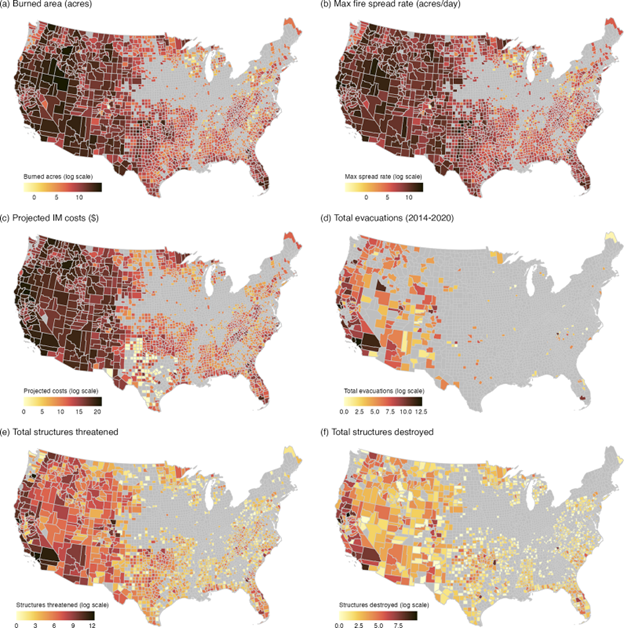Societal impacts and social vulnerability of fires
As global urbanization accelerates, more people are moving into the wildland-urban interface (WUI), which puts millions at greater risk from wildfire. In the Balch Fire Lab, we’re assessing how this expanding WUI affects wildfire behavior and risk in hotspots around the world by integrating our fire event delineation product (FIRED) with improved global maps of the WUI to locate and monitor WUI hotspots and quantify exposure of people and structures. We also analyze how the interaction between an expanding WUI influences fire behavior to inform adaptation and risk-reduction strategies. Additionally, by developing a user-friendly dataset from the U.S. National Incident Management System Incident Status Summary forms (ICS-209-PLUS) and integrating it with spatial data, we can track the daily progression of the most damaging and deadly wildfires in recent U.S. history and relate them to weather, fuel treatments, firefighting response, and socioeconomic impacts.
We're also investigating evacuation challenges in vulnerable mountain communities, where limited egress routes and unpredictable fire behavior create dangerous delays. On the migration front, we’ve found that only a small number of the most destructive fires drive people to relocate, and even then, most people remain in place, either by choice or due to barriers to mobility. Our work uncovers these often-overlooked realities and highlights how data gaps in migration tracking can obscure the true human toll of wildfires. By linking fire behavior, social vulnerability, and movement, we're helping shape smarter, safer wildfire resilience strategies.
See our ICS-209-PLUS dataset and article published in Scientific Data for more information on how to use it. Stay tuned for upcoming updates to the dataset that will include information that can provide a better understanding of resource use and fire complexes.
